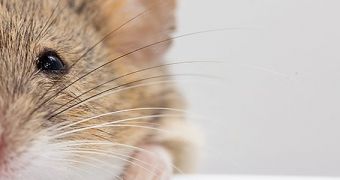A group of investigators from the Cold Spring Harbor Laboratory (CSHL), led by assistant professor Stephen Shea, has just published a new study arguing that the process through which our memories shape the way sensory information is collected was observed in living animals for the first time.
The research was carried out on unsuspecting lab mice, and represents the first time the intricate connection between odors and memories has been observed live. Scientists have been keen on learning more about how certain scents trigger memories for decades, thus far to little avail.
One thing that has always amazed neuroscientists is the brain's ability to take us back in time whenever we smell a familiar odor from long ago. This indicates a clear neural link between memory formation and sensory information collection and processing. However, the nature of this link has remained elusive.
The new investigation is detailed in the February 28 issue of the top journal Nature Neuroscience. Shea's team was able to measure the activity of a group of inhibitory neurons in the odor-sensing area of the mouse brain, which connect to neural regions responsible for cognition and thought.
The team is now arguing that this newly-found connection may be what provides the necessary feedback for experiences and memories to be able to change the way the brain interprets smells. A similar neural system should theoretically exist in humans as well, the group believes.
The inhibitory neurons the team observed, called granule cells, connect the core of the mouse olfactory bulb to areas deeper in the brain, responsible for cognition and memory formation. Previously, the technology did not exist to measure the activity of these cells if the test animals were not anesthetized.
Lead study authors Brittany Cazakoff, a graduate student with the Watson School of Biological Sciences at CSHL, and Billy Lau, PhD, a postdoctoral fellow at the Lab, helped Shea develop the necessary imaging technique to see these minute granule cells in live animals.
“The granule cells provide a way for the brain to ‘talk’ to the sensory information as it comes in. You can think of these cells as conduits which allow experiences to shape incoming data,” Shea says.
“The interplay between a stimulus and our expectations is truly the merger of ourselves with the world. It exciting to see just how the brain mediates that interaction,” the investigator goes on to explain.
The new research paper, entitled “Broadly tuned and respiration-independent inhibition in the olfactory bulb of awake mice,” was published in the March 2 online issue of the journal. The work was made possible through a Klingenstein fellowship, and the support of the Natural Sciences and Engineering Research Council of Canada.

 14 DAY TRIAL //
14 DAY TRIAL //